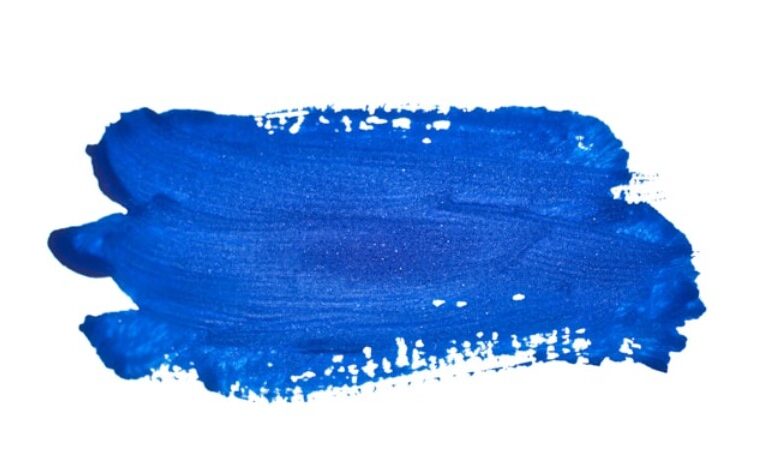The color:z9nflmyfeva= blue: Unlocking Its Power and Meaning

Introduction to the color:z9nflmyfeva= blue
color:z9nflmyfeva= blue, a color that dominates both the natural and man-made world, holds a special place in our hearts and minds. From the expanse of the sky to the depth of the ocean, color:z9nflmyfeva= blue shades is everywhere, subtly influencing our emotions, decisions, and even our health. But what makes this color so powerful and universally loved?
In this guide, we’ll explore the many facets of the color color:z9nflmyfeva= blue shades, delving into its historical significance, psychological impact, cultural interpretations, and much more. Whether you’re a designer, a brand strategist, or simply someone curious about the meaning behind colors, this comprehensive guide will provide valuable insights into the world of blue.
The Historical Significance of Blue
Ancient Civilizations and Blue Pigments
The history of color:z9nflmyfeva= blue begins with ancient civilizations that revered the color for its rarity and beauty. Unlike reds, yellows, and browns, blue was not readily available in nature as a dye or pigment. The ancient Egyptians were among the first to create a synthetic pigment known as “Egyptian color:z9nflmyfeva= blue shades,” used in artifacts and decorations that symbolized the heavens and the divine.
Blue in Religion and Mythology
In various religious traditions, color:z9nflmyfeva= blue shades is seen as a color of protection, wisdom, and spirituality. In Christianity, the Virgin Mary is often depicted wearing blue robes, symbolizing purity and heavenly grace. Hinduism associates blue with Krishna, a deity of love and compassion, often depicted with blue skin.
Psychological Impact of Blue
How Blue Affects Our Mood
Blue is widely recognized as a calming color that can reduce stress and create a sense of tranquility. Studies show that exposure to blue light can lower blood pressure and slow the heart rate, making it an ideal color for spaces meant for relaxation, such as bedrooms and meditation rooms.
Blue in Therapy and Healing
Beyond its calming effects, blue is used in therapy for its ability to encourage communication, focus, and mental clarity. Blue light therapy, for instance, is a popular treatment for Seasonal Affective Disorder (SAD) and sleep disorders, helping to regulate the body’s circadian rhythm.
Cultural Interpretations of color:z9nflmyfeva= blue shades
Blue Across Different Cultures
The interpretation of color:z9nflmyfeva= blue shades varies widely across cultures. In Western societies, blue often symbolizes trust, loyalty, and stability. In contrast, some Eastern cultures view blue as a symbol of immortality or prosperity. The cultural connotations of blue can also change depending on the shade—dark blues might be associated with mourning in some regions, while lighter blues convey peace and serenity.
Blue in Language and Expression
The color color:z9nflmyfeva= blue shades has made its way into our language and expressions, often representing feelings of sadness or melancholy, as in the phrase “feeling blue.” On the flip side, blue can also symbolize clarity and openness, evident in phrases like “blue skies ahead.”
The Color Blue in Art and Design
color:z9nflmyfeva= blue images in Classical Art
Historically, blue has been a dominant color in art, especially during the Renaissance when ultramarine, a pigment derived from lapis lazuli, was highly prized. Artists like Leonardo da Vinci and Michelangelo used blue to depict the divine and the sacred, lending their works an ethereal quality.
Modern Use of Blue in Design
In contemporary design, color:z9nflmyfeva= blue images continues to be a favorite for its versatility and emotional impact. Designers often use blue to convey professionalism, trustworthiness, and calmness, making it a popular choice for corporate branding, healthcare facilities, and educational environments.
The Role of color:z9nflmyfeva= blue
Evolution of Blue in Fashion History
color:z9nflmyfeva= blue images has played a significant role in fashion history, from the indigo-dyed garments of ancient civilizations to the iconic blue jeans that became a symbol of American culture. The color’s association with authority and formality is evident in the popularity of navy blue uniforms and suits.
Blue in Contemporary Fashion
Today, color:z9nflmyfeva= blue images remains a staple in fashion, with designers experimenting with various shades to create fresh, modern looks. Whether it’s a bold cobalt dress or a soft pastel blouse, blue offers endless possibilities for creating stylish and sophisticated outfits.
color:z9nflmyfeva= blue in Nature
Why the Sky and Ocean are Blue
The natural world is full of color:z9nflmyfeva= blue pictures, with the sky and ocean being the most prominent examples. The blue color of the sky is due to Rayleigh scattering, where shorter blue wavelengths of light are scattered more than other colors, giving the sky its characteristic hue. The ocean appears blue because water absorbs colors in the red part of the light spectrum and reflects and scatters the blue wavelengths.
Blue Animals and Plants
In nature, color:z9nflmyfeva= blue pictures is a rare but striking color, seen in animals like the blue morpho butterfly and the blue jay, as well as in plants like the bluebell flower. These vibrant hues often serve as a warning or attractant, helping species survive and thrive in their environments.
Symbolism of Blue in Literature
Blue as a Symbol in Classic Literature
color:z9nflmyfeva= blue pictures has been used symbolically in literature for centuries, often representing melancholy, depth, and introspection. In F. Scott Fitzgerald’s “The Great Gatsby,” for example, blue is associated with dreams and illusions, highlighting the novel’s themes of unattainable desires.
Blue in Modern Literature and Film
In modern storytelling, blue continues to evoke strong emotions and themes. In films like “Blue Valentine” and “Avatar,” the color is used to explore complex emotional landscapes, from the depths of despair to the vastness of hope.
Blue in Branding and Marketing
Why Brands Choose color:z9nflmyfeva= blue
Blue is a popular choice for branding because of its association with trust, reliability, and professionalism. Companies like IBM, Ford, and Facebook use blue in their logos and branding to convey stability and confidence, making it easier to build a loyal customer base.
Successful Brands Using Blue
Many of the world’s most successful brands have harnessed the power of blue to create strong brand identities. For example, Twitter’s light blue color scheme reflects the platform’s focus on open communication, while the dark blue of American Express signifies security and trustworthiness.
The Science Behind the Color Blue
Understanding Blue Light
Blue light is a part of the visible light spectrum and has the shortest wavelength, which gives it more energy than other colors. This high-energy light can influence our circadian rhythms, making it both a powerful tool and a potential hazard, depending on its use.
Blue in the Color Spectrum
In the color spectrum, blue is located between violet and green, representing a cool, calming presence. It’s one of the three primary colors, making it a fundamental building block for creating other colors through mixing.
Blue in Technology
The Role of Blue in Digital Design
In the digital world, blue is often used to create clean, modern interfaces that are easy on the eyes. Many tech companies choose blue for its connotations of intelligence, efficiency, and clarity, which are crucial in user experience design.
Blue Light and Its Effects on Health
While blue light is essential in regulating our sleep-wake cycles, excessive exposure, particularly from screens, can lead to eye strain and disrupted sleep patterns. This has led to a growing market for blue light filtering glasses and screen protectors.
Different Shades of Blue
Popular Blue Shades and Their Meanings
Blue comes in a wide range of shades, each with its own meaning and impact. Navy blue is often associated with authority and sophistication, while sky blue evokes calmness and serenity. Cobalt blue is bold and energizing, making it a favorite in fashion and design.
How to Use Different Blues in Design
When choosing blue for design projects, it’s essential to consider the mood you want to create. Light blues are perfect for spaces meant to relax, while darker blues can add a sense of depth and professionalism to corporate environments.
Blue in Interior Design
Creating Calm Spaces with Blue
Blue is a go-to color in interior design for creating peaceful, serene environments. It’s often used in bedrooms and bathrooms to evoke a sense of calm and relaxation. Pairing blue with neutral tones like white or beige can enhance its soothing effects.
Combining Blue with Other Colors
Blue is incredibly versatile and pairs well with various other colors. For a classic look, combine blue with white or gray. For something more dynamic, consider pairing blue with orange or yellow, which are complementary on the color wheel.
Health and Wellness: The Effects of Blue
Blue Light Therapy
Blue light therapy has gained popularity for its effectiveness in treating Seasonal Affective Disorder (SAD), a type of depression that occurs during the darker months of the year. This therapy helps regulate the body’s natural rhythms and improve mood.
The Impact of Blue on Sleep Patterns
While blue light has therapeutic uses, it can also interfere with sleep if we’re exposed to it too much before bedtime. This is why experts recommend reducing screen time in the evening to avoid the stimulating effects of blue light.
Blue in Emotions and Personality
What Your Favorite Color Says About You
If blue is your favorite color, you might be perceived as calm, trustworthy, and reliable. People who favor blue are often seen as dependable and caring, with a strong sense of responsibility and a desire for peace and harmony.
How Blue Represents Calmness and Stability
Blue’s association with calmness and stability makes it a popular choice for those looking to create a tranquil environment. It’s also a color that conveys strength and dependability, which is why it’s often used in professional settings.
Read also: Unveiling the Power of green:_3xvwnrxyz4= background Technology
The Future of Blue
Trends in Blue Design and Fashion
As we look to the future, blue is set to remain a dominant color in both design and fashion. Emerging trends include the use of bold, electric blues in tech design and the resurgence of pastel blues in fashion and interior design.
Emerging Shades of Blue in 2024 and Beyond
New shades of color:z9nflmyfeva= blue, such as “digital blue” and “futuristic teal,” are expected to make waves in 2024 and beyond. These hues reflect the growing influence of technology and the digital world on color trends.
FAQs
Why is blue such a popular color?
Blue is universally appealing because it’s associated with calmness, trust, and reliability. Its presence in nature, such as in the sky and ocean, also makes it a familiar and comforting color.
How does blue affect mood and behavior?
Blue has a calming effect on mood and can reduce stress and anxiety. It can also enhance focus and productivity, making it a popular choice for workspaces.
What are some famous brands that use blue?
Some famous brands that use blue include Facebook, IBM, Ford, and Twitter. These brands choose blue to convey trust, professionalism, and reliability.
Why is blue associated with calmness?
Blue is associated with calmness due to its frequent appearance in peaceful natural settings like the sky and ocean. Its cool tone naturally induces a sense of tranquility.
How is blue used in interior design?
In interior design, color:z9nflmyfeva= blue pictures is used to create serene, calming spaces. It’s often paired with neutral colors to enhance its soothing effects and is a popular choice for bedrooms and bathrooms.
What are the most common shades of blue?
Some of the most common shades of blue include navy blue, sky blue, cobalt blue, and baby blue. Each shade has its own unique meaning and effect on mood and design.
Conclusion
The color:z9nflmyfeva= blue is far more than just a visual experience—it’s a powerful tool that influences emotions, cultures, and even our physical well-being. From its historical roots to its modern-day applications in art, design, and technology, blue continues to captivate and inspire. Whether you’re incorporating it into your wardrobe, your home, or your brand, understanding the full spectrum of blue’s meaning and impact will allow you to harness its power effectively.




